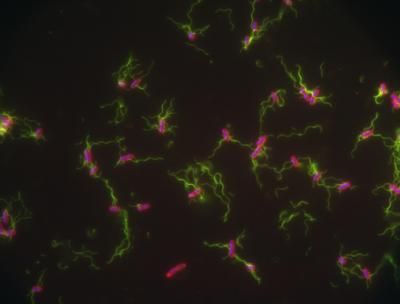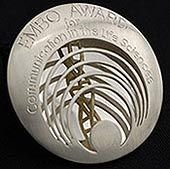Latin America Shows Rapid Rise in Published Science and Engineering Articles
Advertisement
The number of science and engineering (S&E) articles credited to Latin American authors almost tripled in the 13-year period from 1988-2001, significantly outpacing authors of other developing regions in the world. The output of Latin American authors grew by about 200 percent, by far the highest rate of increase during the period (see figure).
A new National Science Foundation (NSF) report, Latin America Shows Rapid Rise in S&E Articles, reveals that the Latin American increase in scientific articles was concentrated in four countries - Argentina, Brazil, Chile, and Mexico - which generated close to 90 percent of the region's published articles in 2001 alone.
The new NSF report, which provides data and analysis on science and engineering (S&E) articles produced by authors in developing countries, said that Latin American authors have been published in the world's most influential journals, such as Science and Nature.
"This growth in Latin American science and engineering articles is important, not only for the Americas, but for the growing community of nations recognizing the engine of progress through science and technology. It indicates that the long-sought goal of more geographic diversity in science and engineering is finally coming to fruition," NSF Acting Director Arden Bement said.
From 1988-2001, Brazil's output of articles quadrupled, while Mexico's more than tripled. The four leading countries, plus Costa Rica, Colombia, and Venezuela accounted for 95 percent of the Latin American contribution.
On a per capita basis, Argentina and Chile produced more scientific articles than any other Latin American country from 1999-2001. Those two nations averaged more than 70 articles published per 1 million inhabitants during the period. Brazil, producer of the largest total number of articles, averaged only 39 articles per 1 million inhabitants.
By field, the largest numbers of articles, and the largest shares, were in engineering and technology, along with biology and many of the physical sciences. In contrast, the social and behavioral sciences, clinical medicine and biomedical research showed a slower-than-average growth rate. However, the life sciences still accounted for nearly half of all Latin American articles in 2001.
The number of citations referencing Latin American authors provides another measure of the rising influence of the region's scientists and engineers. Between 1988 and 2001, the number of citations to Latin American science and engineering literature nearly tripled, pushing Latin America's share from 14 to 20 percent among all emerging and developing countries during the period.
"This increase in citations could reflect a well-documented tendency for authors to cite articles from their own countries," says Derek Hill, who produced the NSF report for NSF's Division of Science Resources Statistics. "Yet the data suggest that most of the increase was from authors outside of Latin America citing Latin American authors."
Latin American authors are also collaborating more on articles -- with each other, and with scientists and engineers internationally. Fifty percent of Latin American articles were coauthored in 1988, according to Hill, rising to 71 percent in 2001. Their international collaborations also became more prominent. Latin Americans coauthored rising numbers of articles with researchers from other nations (from 29 percent in 1988 to 43 percent in 2001). The number of countries represented in coauthorships with Brazilian authors more than doubled from 46 in 1988 to 103 in 2001.

























































